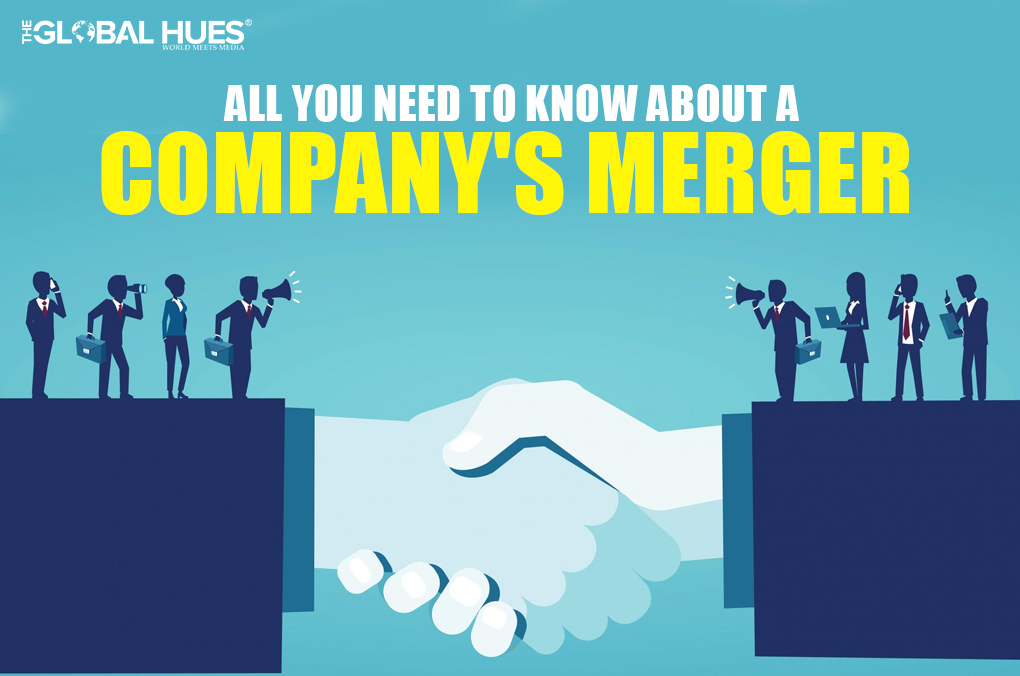With 6 out of 10 people opting to be their own boss through a startup, it is important that one must be aware of the business jargon and procedures. Merging of two companies is a situation through which an entrepreneur might have to undergo and for a time like this, it is must to have adequate knowledge of what the merger precisely is in order to avoid misleading and fraud.
India has the 3rd largest startup ecosystem in the world with about 41,061 startups as recorded in December 2020 and as this graph increases at such a high pace, a merger seems like a prudent choice in order to gain economic scale but it’s crucial to know the term “merger and acquisition” inside and out to carry out a successful deal.
What is a Merger?
A merger can be defined as an agreement between two companies that unites them into one new company. Mergers are usually done to spread a company’s reach, extend segments, increase market share, and mainly to increase its shareholder value.
According to Gaughan (2007), DePamphilis (2003), Scott (2003) a merger is a combination of two corporations in which only one corporation survives and the merged corporation goes out of existence. In a merger, the acquiring company assumes the assets and liabilities of the merged company. Moreover, although the buying firm may be a considerably different organization after the merger, it retains its original identity.
Why is a Merger Important?
Mergers are a great alternative for two companies with their notable experience and knowledge to combine and produce a new business that is immensely beneficial than the stand-alone companies.
After a Merger, the already existing shareholders of the companies receive shares in the newly formed companies. Companies secure more business and there is an increase in the scale of operations once it goes under a merger.
Companies usually undergo a merger when they need to acquire assets that might take time to develop internally.
A Merger reduces the competition between the companies, eventually causing a decrease in the advertising price of products. The decrease in prices benefits the customers thus causing an increase in sales.
Mergers may prove advantageous if used strategically, making the best use of financial resources.
HOW DOES A MERGER TAKE PLACE?
Mergers are not one-to-one-based procedures instead they are more like a split. The shares of the new company in exchange for your stake in the company are represented by a ratio.
To describe in easy language, in a Merger two companies come to an agreement for one company to buy the other’s stock from the shareholders in return for its common stock.
TYPES OF MERGERS
Generally, mergers aren’t easy to understand, in addition, there is not only a single merger that could be applied in every field. So here is a list of all types of mergers that companies opt to.
-
Vertical Merger
This is a merger between the companies that produce the same products. It mainly takes place when companies have a “buyer-seller relationship” and it can be either upstream or downstream. For example, when the business takes over its suppliers, then it is an upstream merger and if the company extends to its distribution entities, the merger is then known as downstream.
-
Market Extension Merger
This is a merger between the companies that produce the same products but in different markets. The main objective of this merger is to make sure that the merging companies can get access to a bigger market and that ensures the biggest client base.
-
Conglomerate Merger
This is a merger between companies that are not related in any means regarding their business. It is divided into two categories: pure and mixed. When the two companies have nothing in common, it is a pure conglomerate merger while a mixed conglomerate merger involves companies that are looking for product extensions or market extensions.
-
Product Extension Merger
This is a merger between companies that produce different products but in the same market. This merger allows the merging companies to group their products and get access to a bigger set of consumers ensuring higher profits.
-
Horizontal Merger
This is a merger between the companies that are in constant competition against each other. It is aimed at reducing competition, increasing market share, economies of scale, and research and development.
BENEFITS OF A MERGER
A merger is beneficial to the company in numerous ways, some of the notable benefits are listed below:
- Decrease in duplicacy: Companies producing the same products would come together avoiding replications.
- Prevention of loss and bankruptcy: Mergers can save companies from undergoing major financial loss and bankruptcy along with securing a number of jobs for people.
- Geographical expansion: Merging companies on the basis of their geographical regions would expand the business.
- Reduction in operation expense: The expenses to set out operations are reduced.
- Increase in the market share: A merger increases the sales of the company thus increasing the market share.
DISADVANTAGES OF A MERGER
Like any other phenomenon, a merger too comes with its own damages.
- Unemployment: Companies remove the number of underperforming or surplus employees under a merger.
- Miscommunication between companies: The companies merging together often come from different cultures and traditions that may result in lack of communication and affect the company.
- Failed economies of scale: Due to miscommunication, it is hard for companies to find common ground and achieve shared goals, resulting in not being able to attain economies of scale.
- Increased prices of products: Newly formed companies often tend to increase their products’ rates as they gain a larger market share.
EXAMPLES OF MERGERS
There are some notable examples of mergers between top companies in India.
-
Hindalco-Novelis
This merger is one of the biggest mergers in the aluminium industry. Hindalco is an aluminium manufacturing company and Novelis is the world leader in aluminium rolling and aluminium products. The Hindalco company attained an agreement to acquire Novelis for $6 billion, making the combined company the world’s largest rolled-aluminium manufacturer.
-
Mahindra & Mahindra -Schoneweiss
Mahindra & Mahindra Limited is an Indian multinational automobile manufacturing company. It acquired 90% of Schoneweiss in 2007 and flourished Mahindra’s place in the world market.
-
Tata Steel- Corus
Tata steel is one of the leading steel companies in India and Corus is Europe’s second-largest steel company. Tata steel took over Corus in 2007 for the price of $12.02 billion, making Tata Steel the world’s fifth-largest steel producer.
So, next time when you need to gather information on mergers for your company keep these key points in your mind and act wisely overlooking every aspect of the merger making a thriving deal that leads your company to greater heights.



